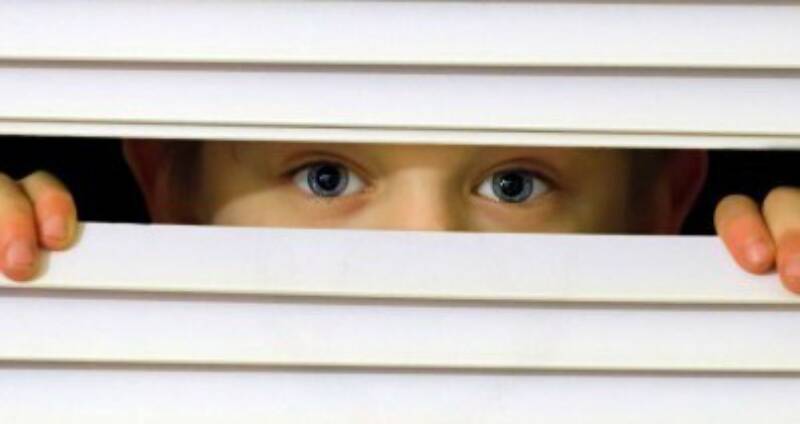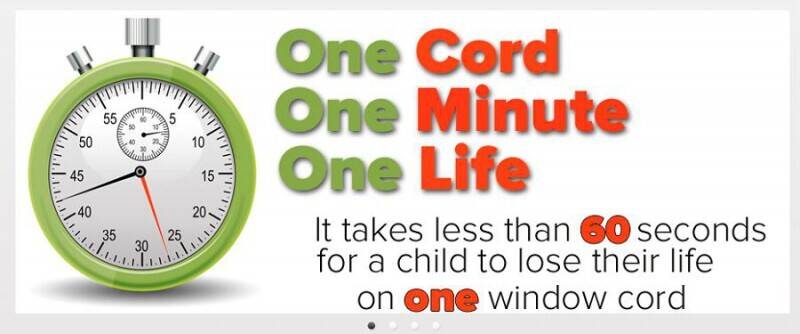
The Facts
32 children have died as a result of blind cord accidents in the UK between 1999 and 2015 the children were aged between 15 months and 36 months.
Why do blind cords pose such a risk?
Children become entangled on hanging cords when playing, climbing or exploring near window blinds.
Toddlers' windpipes have also not yet fully developed and are smaller and less rigid than those of adults and older children. This means that they suffocate far more quickly if their necks are constricted.
To reduce the risk posed by looped cords, including blind cords, cords should be kept out of the reach of children.
How can we help?
Council Environmental Health Officers working within consumer protection will continue to work with businesses to ensure that they are meeting the full legal requirements.
Blind Cord Standard
From 2014, stringent new standards governing the manufacture, selling and installation of new internal window blinds come into effect with the aim of reducing child accidents.
Children have died from accidents relating to internal window blind cords or chains. If you manufacture, import, distribute or sell (including supply and fit) internal window blinds, you have a legal duty under ‘The General Product Safety Regulations 2005’ to only supply ‘safe products’. A ‘Safe Product’ is one which under normal or reasonably foreseeable conditions of use including duration and, where applicable, putting into service, installation and maintenance requirements does not present any risk or only the minimum risk compatible with the products use, considered to be acceptable and consistent with a high level of protection for the safety and health of persons.
In July 2011, the EU issued a Decision (2011/477/EU) to address the risks posed to children by internal blinds, corded window coverings and safety devices. This decision resulted in the only standard for internal window blinds being revised and the addition of two supporting test standards in order to remove the dangers posed by potentially hazardous looped cords and chains.
On 28 February 2014, the British Standards Institution (BSI) published these standards in the UK:
- BS EN 13120:2009+A1:2014 – Internal blinds – Performance requirements including safety
- BS EN 16433:2014 – Internal blinds – Protection from strangulation hazards – Test methods
- BS EN 16434:2014 – Internal blinds – Protection from strangulation hazards – Requirements and Test methods for safety devices
In essence the standards define a ‘safe product’ and therefore compliance with these standards affords a presumption of conformity with The General Product Safety Regulations 2005.
The new Standards will mandate:
- Safety devices for preventing any cords or chains from creating a hazardous loop
- The testing of all safety critical systems of internal blinds
- The testing of blinds using safety systems
- The fitting of safety devices on cords or chains at the point of manufacture
- Limitation on cord and chain lengths
- Warnings and instructions
- Packaging and point-of-sale information.
As a result, all blinds placed on the market now have to display warning labels placed on the front of blinds as well as on packaging. They must include safety instructions, as well as safety devices to ensure blind cords are kept out of the reach of young children. The Standard also imposes a maximum cord and chain length where there is a likelihood of young children aged from 0-42 months being present which includes homes and public places like hotels, hospitals, schools, shops, places of worship and nurseries.
As the enforcing authority for the General Product Safety Regulations 2005, The Council is issuing the guidance document, ‘Product Safety Focus Group Joint Guidance with the British Blind and Shutter Association (BBSA) on Internal Window Blinds’ to all blind manufacturers, importers, distributors and retailers to assist them in meeting their legal obligations under these regulations. Other information on blind cords is available ‘Q&A on Blind Cords – Safety Requirements’ which has been produced by the Department of Business, Innovation and Skills (BIS) to help answer the questions industry may have regarding the legal implications posed by the new Standards.
Council Home Safety Officers help to raise awareness of the dangers of blind cords and can supply blind safety devices for blinds already in your home through the home safety equipment scheme. click here
Further Information Available:
Leaflet – Make it Safe
Window Blinds ACTSO Endorsement V4 Final
Q&A on Blind Cords – Safety Requirements
- www.rospa.com/blindcords – Includes leaflets in several languages
- To download a free copy of the Make it Safe leaflet in several languages- click here.
- The British Blind and Shutter Association have produced a video on window blind safety. The video can be accessed using the following link - click here.
- Please see link below to a very moving and powerful 7 minute video clip featuring the Saba Family from Portadown who recently lost their son Bryan, after he became entangled in blind cords. www.youtube.com/watch?v=30ziiHQZR5s&feature=youtu.be
- Dean Regan Russell's life and tragic death, as told by his grandfather Martin Regan https://www.youtube.com/watch?v=4JoV7GoTuTQ

Contact Us
If you would like further information, please contact us at Ballymoney Office, Riada House, 14 Charles Street, Ballymoney BT53 6DZ or Limavady Office, 7 Connell Street, Limavady, BT49 0HA